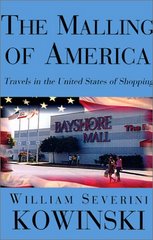The earthquake in south Asia, along what's called the Sumatra Margin, was a subduction zone quake. That's the first relevant resemblance: there is a subduction zone just off the North Coast, called the Cascadia Margin. At the Sumatra Margin, the Indian/Australian plate is subducting beneath the Eurasian plate. Off the North Coast, the eastward moving Juan de Fuca plate subducts the westward moving North American plate. In both places, earthquakes resulting from movement of the plates displace ocean water, creating tsunamis.
Geologist Mark Hemphill-Haley took the story from there. He illustrated how, in a subduction zone, one of the plates is always moving under the other, creating wrinkles in the landscape. Here on the North Coast "we see vertical uplift right now, between earthquakes."
He described the dynamics of how earthquakes and resulting tsunamis are created. "What happens in an earthquake is that the upper plate that has been storing the strain suddenly leaps oceanward, and as it does, the stuck area ruptures: you have an earthquake. But you also have a large amount of crust that moves oceanward, and it displaces a lot of water quite rapidly. The water is moved upward and then it has no place to go but outward."
The tsunami usually radiates in all directions, at speeds calculated at over 500 mph. "Once they come into the coast they tend to slow down and stack up, but they still move in at approximately 40 mph. Some of the fastest river flood waters have been clocked at only 10 mph. So we're talking about something that is quite a bit faster than any flood you've ever witnessed."
He showed some video clips from the Sumatra tsunami, taken from the third floor of a house a mile and a half inland. The water almost reached the terrified people there, fifty feet above the ground.
Tsunami waves move in and also move out in waves of debris, scouring everything in their path. The first waves were preceded by a huge withdrawal, or drawdown, of ocean from the beach. This should be a warning, but unfortunately people went down to the suddenly enlarged beach to collect shells, not realizing what was coming.
The Sumatra rupture zone is roughly the same size as the Cascadia zone, and Cascadia has generated earthquakes of the same 9.0 magnitude. The difference is that the suduction zone is closer to the North Coast, so the tsunami would reach shore much more quickly. "We suspect that in a magnitude 9 event, we'd have three to four minutes of strong shaking, and before the shaking is over, the tsunami would arrive. Our entire coastline will feel this almost instantaneously."
A tsunami is not a single "tidal wave," but a group of waves, sometimes separated by as much as half an hour.
HSU adjunct professor Harvey Kelsey then talked about another effect of a suduction quake: subsidence. "As the upper plate leaps forward during the earthquake, it stretches the upper plate and you get a subsidence. It occurs inland but right near the coast." He described the efforts of geologists to understand how earthquakes work from literally unearthing evidence of what happened in past quakes.
Kelsey recounted what we know about the last major quake in the Cascadia zone, which was in 1700. There are no written records here, but there are in Japan, which sustained considerable damage from an "orphan tsunami" which has no local shaking preceding it. Scientists now believe this tsunami resulted from the January 26, 1700 Cascadia earthquake. Other evidence for this quake comes from tribal stories of North Coast Native peoples who witnessed it, and from trees that went underground as a result of subsidence. Kelsey also described evidence of tsuamis resulting from this quake, found in deposits of beach sand swept into freshwater coastal lakes in Washington state.
R.I.P. 2025
-
In some of the lists of Notable Deaths of 2025 published in various
newspapers and other outlets on the Internet, I'm just starting to see some
names ...
4 days ago








No comments:
Post a Comment